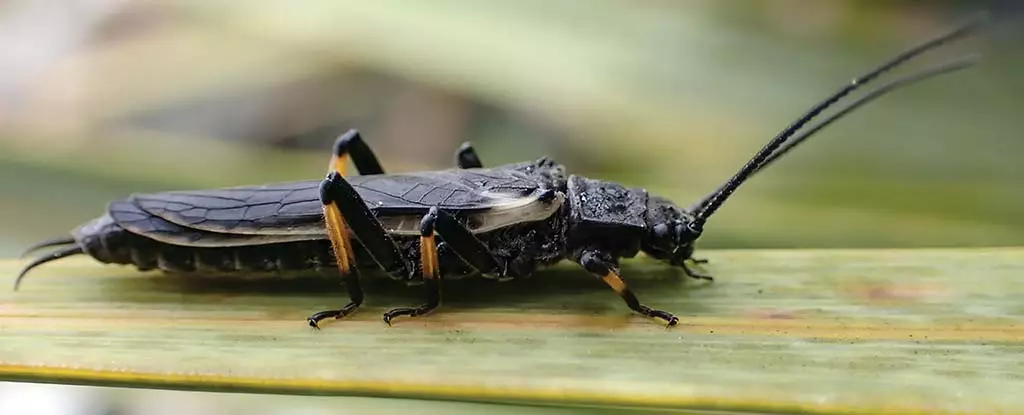Evolution is often framed as a slow and gradual process, but some species have shown remarkable ability to adapt to rapid environmental changes brought on by human activity. One striking example of this dynamic can be found in a native New Zealand insect: the long-tailed stonefly, known as Zelandoperla. This insect had previously relied on a clever mimicry strategy to avoid predation by emulating the appearance of another stonefly, Austroperla, which possesses toxic qualities. However, recent research has shown that in areas where deforestation has occurred, Zelandoperla has modified its coloration as a response to changing ecological pressures.
The long-tailed stonefly’s initial strategy relied on its ability to imitate the striking visual characteristics of the toxic Austroperla, which produces cyanide to ward off predators. By taking on this guise, Zelandoperla benefitted from decreased predation, as birds found it difficult to distinguish between the two species. The mimicry functioned effectively in environments where both species coexisted, demonstrating a fascinating case of evolutionary advantage through deception.
However, as human encroachment began to clear massive tracts of forest, the landscape changed drastically. The Austroperla populations dwindled dramatically, given their reliance on specific forest ecosystems for food and habitat. In the absence of this toxic stonefly, the environment ceased to provide a background for Zelandoperla’s mimicry, leading to the dramatic shift in its evolutionary strategy.
The research conducted by scientists at the University of Otago reveals that in deforested regions, Zelandoperla populations have begun to abandon their mimicry strategy entirely. This transition manifests as a significant change in coloration; instead of maintaining their dark, mimetic hues, some individuals have evolved to sport lighter shades. The results highlight a pivotal moment in the study of evolution, showcasing how species can rapidly adapt when their ecological frameworks are upended.
It is essential to appreciate that the evolutionary response to such novel pressures is not merely reactive; it represents an active process where genetic adaptability plays a crucial role. The researchers employed an innovative combination of field observations, experimentation, and genetic mapping to illustrate the insect’s response to widespread habitat destruction. Their findings indicate that in certain areas, the Zelandoperla shifted away from darker pigmentation—possibly less advantageous in the new environment—while simultaneously adapting to a landscape devoid of their previous mimicking counterpart.
The research underscores a theme of resilience despite the harsh realities of human-induced environmental transformations. The deforestation that has plagued southern New Zealand since European settlers arrived has significantly disrupted ecological relationships that have been in place for millennia. Yet, the study shows that certain species are not simply victims of extinction but are capable of adjusting their life strategies to align with the conditions presented by an altered environment.
Zoologists Jon Waters and Graham McCulloch, who contributed to the study, emphasize that this case presents a broader trend of populations exhibiting similar shifts in response to habitat changes across different regions. This adaptability reflects a predictable model of evolution, where environmental challenges not only exert selective pressures on species but also foster innovation and change in response to those pressures.
Understanding the long-tailed stonefly’s adaptive responses carries implications that reach beyond ecological curiosity. It serves as a poignant reminder of the intertwined nature of ecosystems and the effects of human interventions. As global deforestation continues, and as biodiversity is increasingly compromised, studying the resilience mechanisms of species like Zelandoperla becomes crucial for conservation efforts.
By examining the evolutionary adaptations of the long-tailed stonefly, researchers can better comprehend the complex interactions between habitat loss and species survival. This knowledge inspires hope for the future, illustrating how life can endure and adapt, even amid the challenges that come with rapid environmental changes.


Leave a Reply